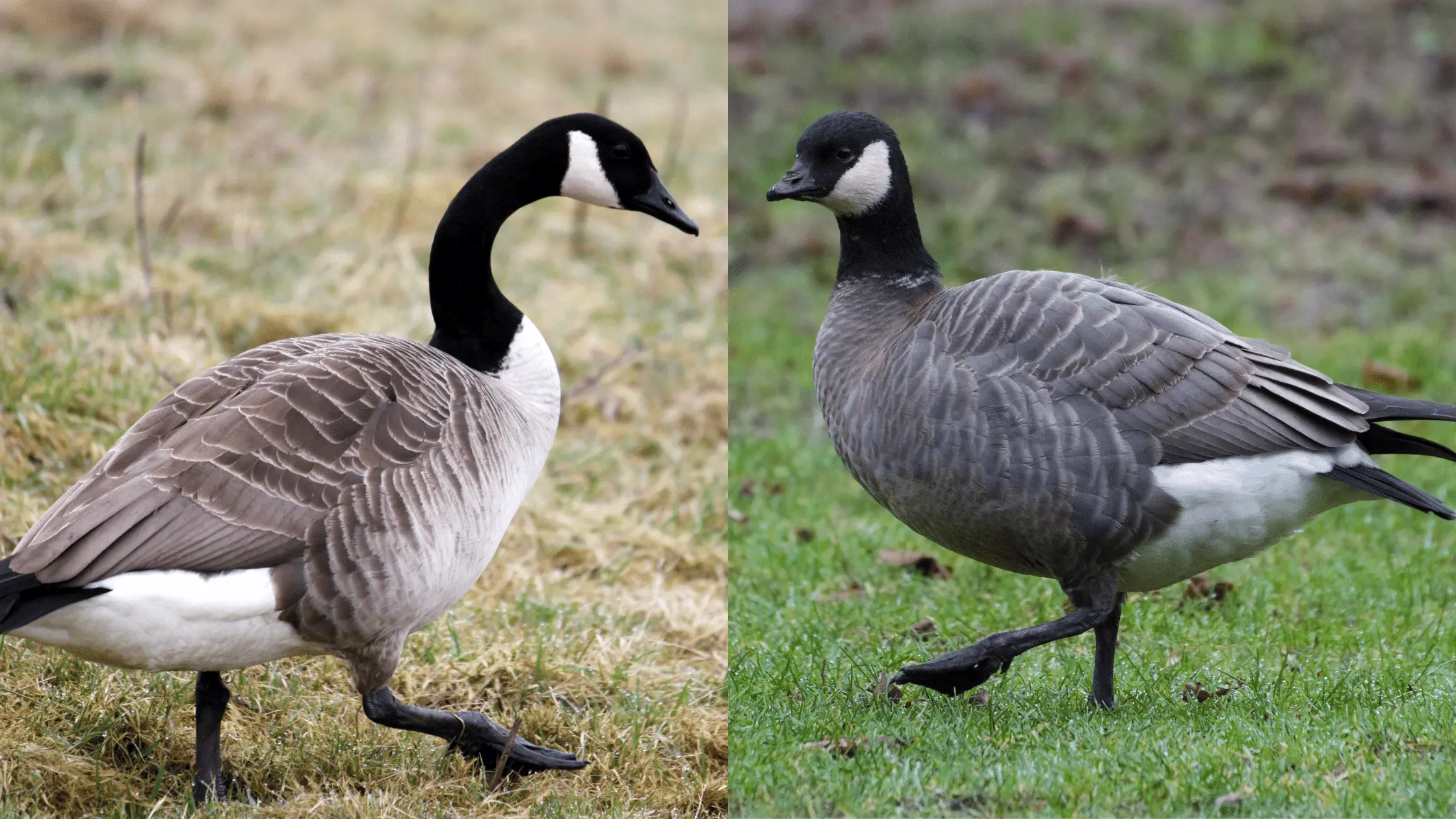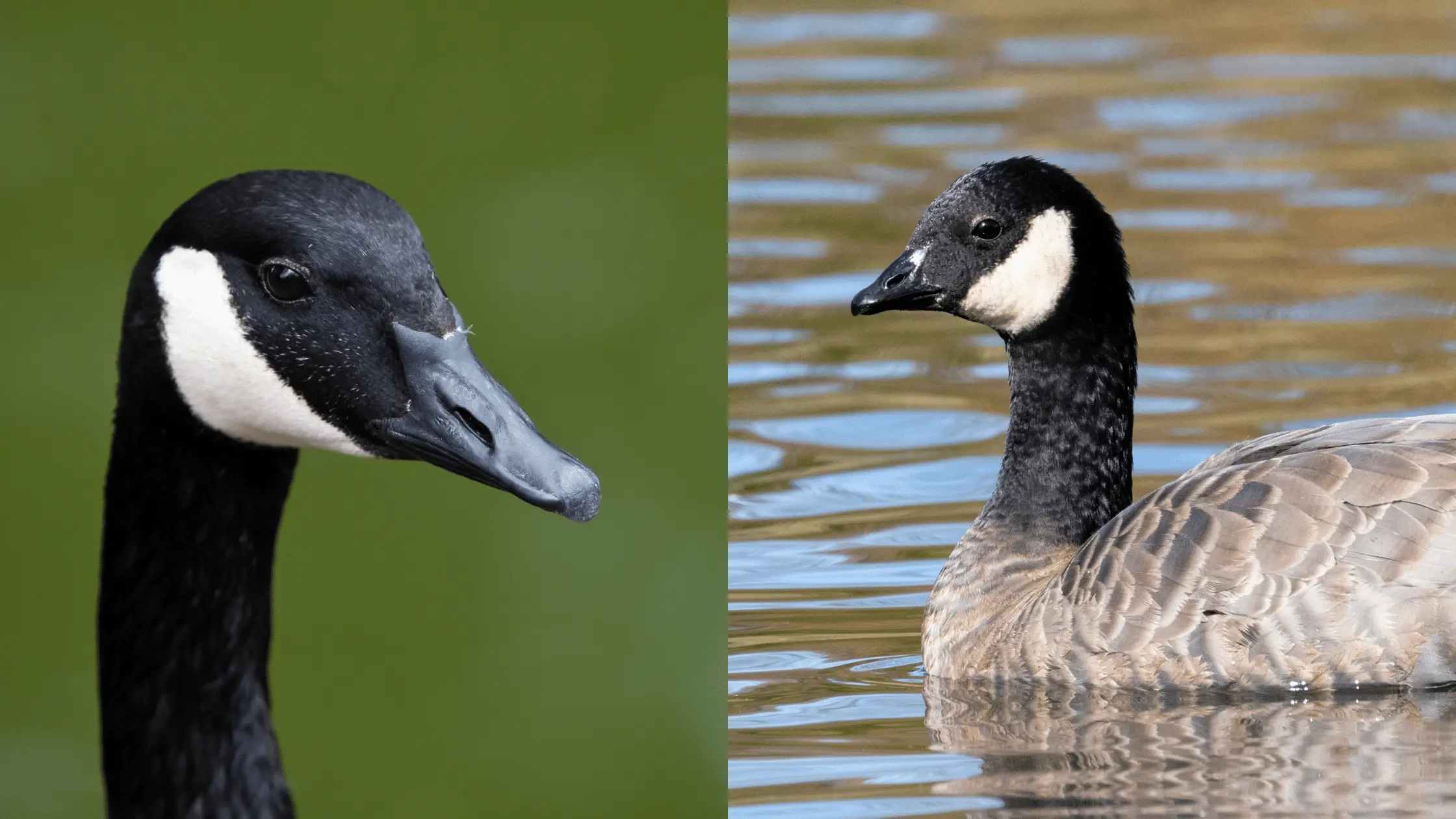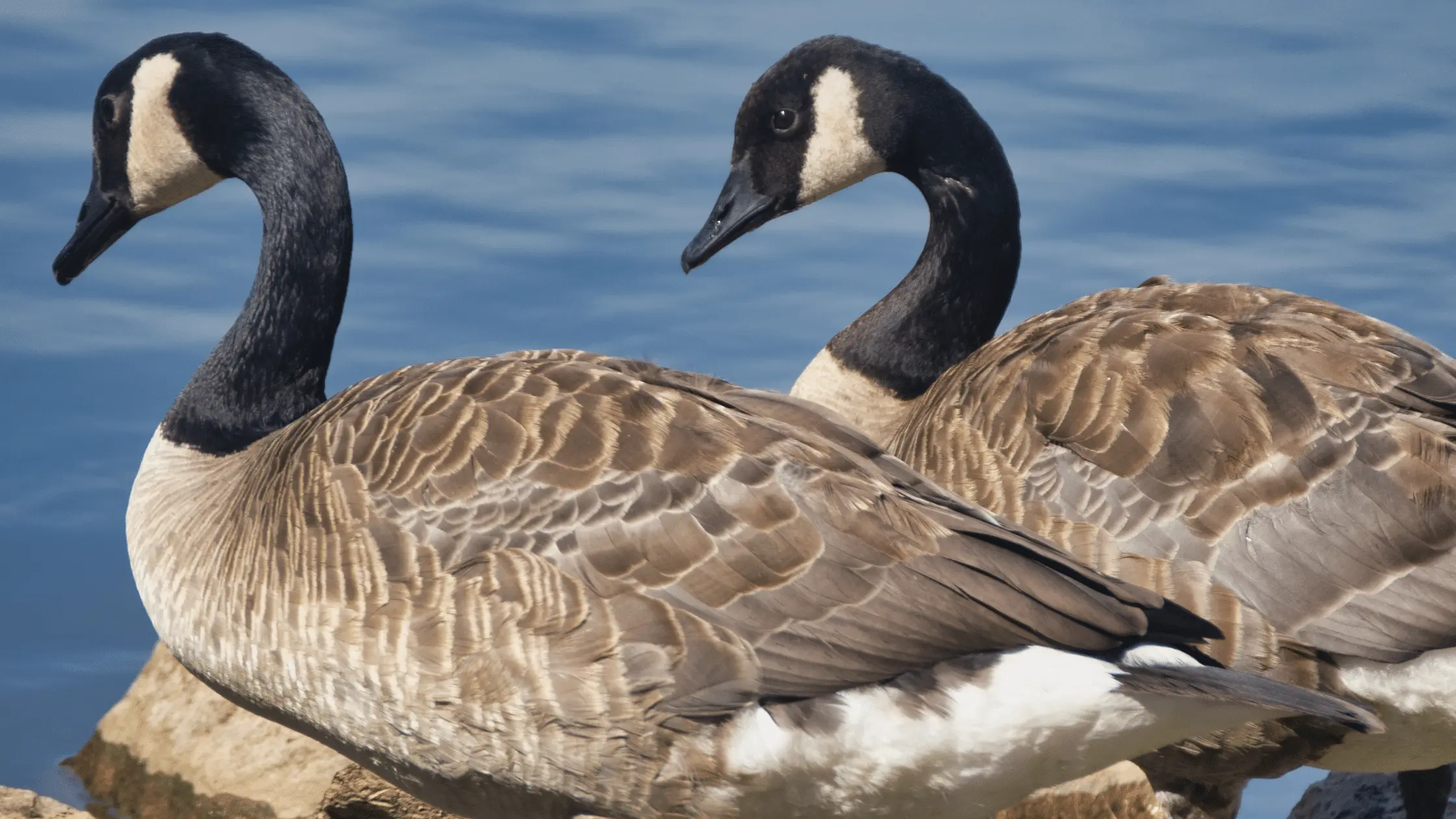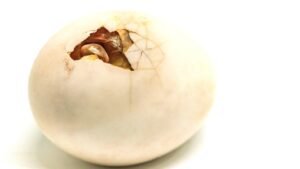As an amateur bird watcher, I often try to differentiate as many bird species as possible. However, I had never had much trouble with my “differentiating” skills until I ran into the Canada Goose and the Cackling Goose. These two birds look so much alike that they were considered a single species even at one point.
However, on closer inspection, I realized that the cackling Goose has a stubbier bill; they have a cuter look than the Canadian Geese. Cuteness isn’t the only means of telling these birds apart; there are other ways to ID them, such as size and calls. Wanna know more? Let’s dive in.
Essential Identification Of Canada Goose and Cackling Goose

Before I go into showing you the differences between the Canada Goose and Cackling Goose, it is essential that I lay down some basic identification for each of them.
One of the ways I use to identify a Cackling Goose is its size. However, I do not use size as the only way to identify a Cackling Goose. While size as a factor can be a good pointer, whether looking at a Cackling Goose or a Canada Goose, it can sometimes be misleading.
If you aren’t sure if it’s a Canada Goose or Cackling Goose, by looking at their size, you can take a look at the bird’s face. The face of the Cackling Goose is quite cute. Its bills are short and stubby. The Cackling Goose also has a steep forehead.
Both the Cackling Goose and Canada Goose have a white-cheek patch. However, when you take a closer look at the white-cheek patch on the Cackling Goose, you will realize that it isn’t as high as the Canada Goose. In terms of color, the Cackling Goose has a warmer tone to its body. Even when the Cackling Goose extends its neck, the neck is still stubbier than the Canada Goose.
On the other hand, the Canada Goose is more commonly known to people. You probably know the Canada Goose as the aggressive and loud one. If you are interested in learning about another aggressive bird, you may like to read about the blue jay.
The bill of this Goose is longer and slender. Unlike the steep forehead of the Cackling Goose, the Canada Goose has a sloping forehead. Even smaller Canada Goose still has a thin bill. Now that you know the basics of identifying a Cackling Goose and a Canada Goose let me take you through the specifics.
Canada Goose Vs. Cackling Goose: Size
Even though I don’t consider size to be a guarantee in identifying a Cackling Goose from a Canada Goose, it is still essential that you know the size difference between these birds. If you’ve ever seen a Mallard, then you have an idea of how a Cackling Goose looks in size. So, if the size isn’t a reliable way to identify these two birds? Why am I talking about it? I am talking about it because size can help you separate the unusual Geese from the flock.
Still talking about size, the Cackling Goose has a short, stubby bill. The angle of inclination of the Cackling Goose bill is steep, giving its bill a distinct look. The nares on the Canada Goose are asymmetrical, while the ones on the Cackling Goose are elliptical.
Cackling Goose Vs. Canada Goose: Head Differences

The head of the Cackling Goose is short and stubby. That is why I often say that the best way to differentiate between these two birds is by looking for the cuter one. The head of the Cackling Goose is boxy because of its steep forehead. As mentioned earlier, the white cheek patch on the Cackling Goose doesn’t extend above its eye. An ident usually shows under the eye of the Cackling Goose. However, I don’t usually rely on seeing the indent before identifying the Cackling Goose because the Canada Goose can also have the indent.
The Cackling Goose is like the toy version of the Canada Goose. They are petite and quite dainty. Their bills and neck are proportionate to the rest of their body. The Cackling Goose may have a white ring at the base of its neck, and when the white ring is absent, the dark color of its neck and its lighter dark body contrast better.
The Canada Goose is a big water bird. Their necks are long, and their bills are enormous. A Canada Goose can even be taller than an average toddler. Of course, there may be variations in size. However, as a rule of thumb, the Canada Goose is bigger than the Cackling Goose.
Cackling Goose Vs. Canada Goose: Range
The Cackling Goose will breed in remote parts of Northern Canada and Alaska during the summer and then move south for the winter season. Unlike the vulture species that will avoid winter as much as possible, it would seem that the Cackling Goose likes the cold. So, if you want to see a Cackling Goose, you may need to look out for them during the winter.
When the winter season comes, Cackling Goose becomes quite common in the Pacific Northwest, Southern Great Plains, California Central Valley, and the Coasts of Texas and Louisiana.
The Canada Goose is native to North America. They breed in Canada using a wide range of habitats. It is easy to spot the Canada Geese, because they are present all year round in the Southern parts of their breeding range. They also occur on the Pacific Coast.
Canada Goose Vs. Cackling Goose: Flock Size
The American crow may like to gather in large roosts, but the Canada Goose will prefer to hang out in small flocks. The flock size numbers anything from between 2-30. They can also form groups of up to 100 goslings and adults when it’s late in spring and summer.
I have seen bigger Canada Goose flock sizes when they hang out in grassy fields near a body of water. This usually happens around golf courses and parks.
The Cackling Goose likes to hang out in much larger flocks. Their flock size can range from anything between 100-10,000 birds. So, one of the ways you can identify a Cackling Goose from a Canada Goose is when the flock is so big that you can’t count them all. A pair of Cackling Goose will also mate for life.
Canada Goose Vs. Cackling Goose: Call
Both the Canada Goose and the Cackling Goose make a variety of calls. However, their main calls are different. You can accurately tell them apart when you train your ear to differentiate between their calls.
The Canada Goose main call is a deep honk. The honk alternates. It can start with a low note and end on a high one. However, they will usually use the lower call.
The Cackling Goose gets its name because it makes a call that sounds like a cackle. Cackling Goose’s sound is a high-pitched sound that goes like a “yelp.” The call the Cackling Goose is usually on a high note.





